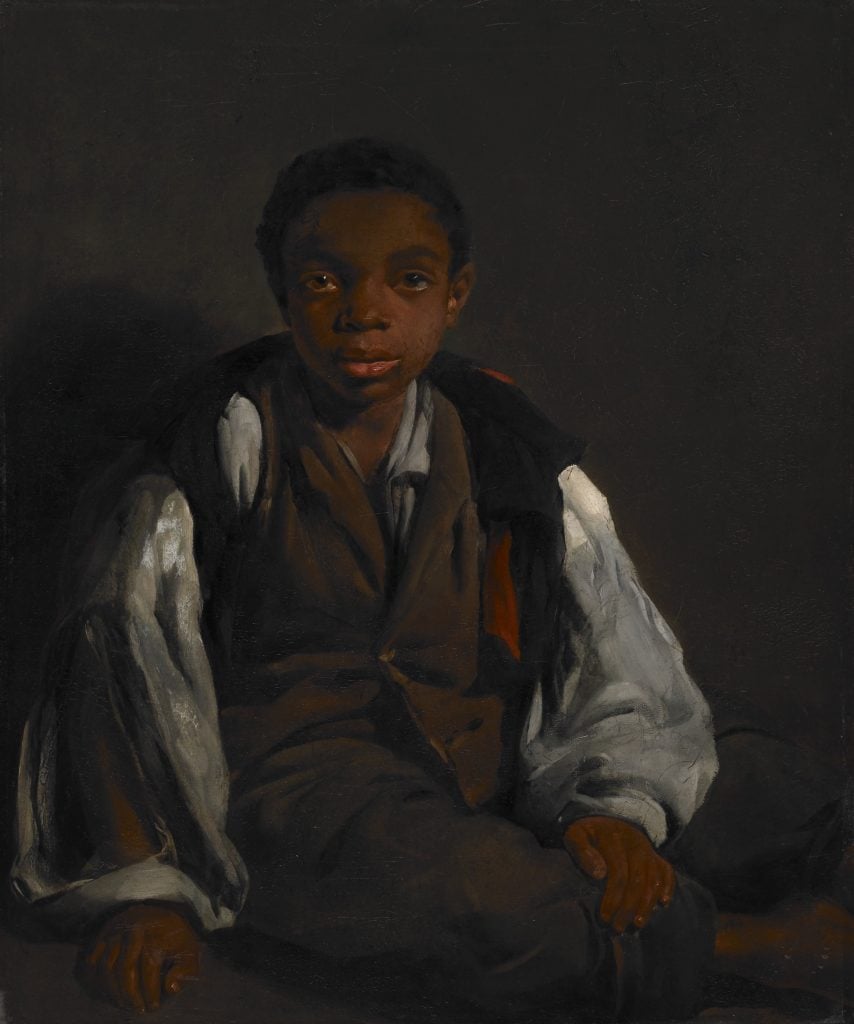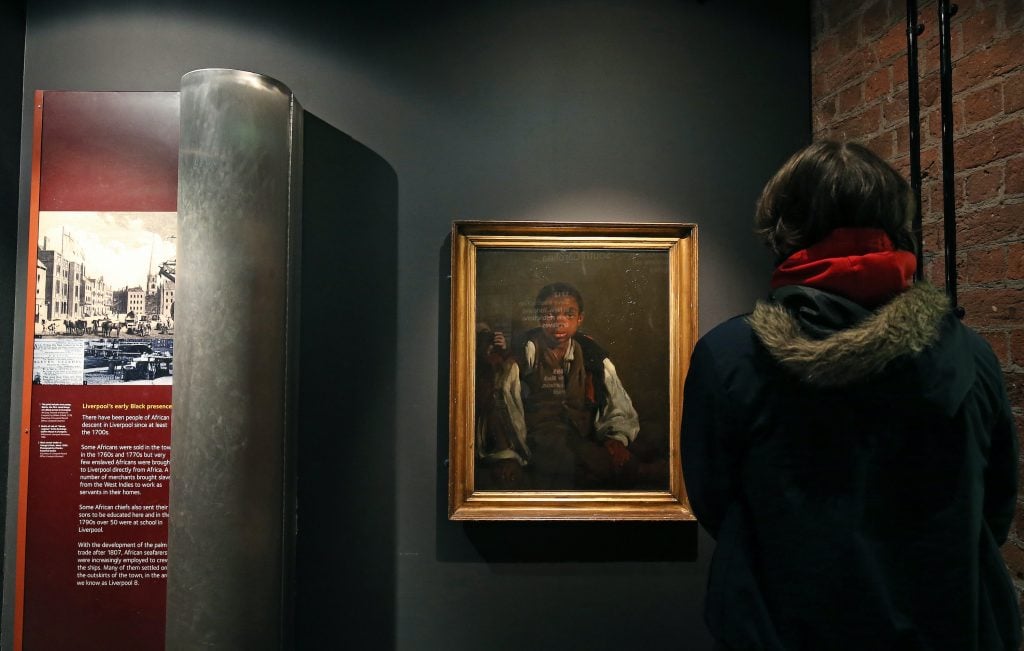Museums & Institutions
A Liverpool Museum Wants Your Help to ID This Enigmatic Portrait
The work was painted by William Lindsay Windus, its sitter unknown.

The work was painted by William Lindsay Windus, its sitter unknown.

Verity Babbs

National Museums Liverpool is appealing for information about the sitter of William Lindsay Windus’s portrait The Black Boy (ca. 1884), which has been in the Walker Gallery’s collection since 1948 and on display in the International Slavery Museum since 2007. The painting shows its sitter—only ever known as “The Black Boy”—looking straight at the viewer, barefoot and in ragged clothing. It is the only painting of an individual Black child in Liverpool’s International Slavery Museum. Now, the institution wants to find out more about who this boy truly was.
“We are looking for more information on the artist and hoping to identify the subject of The Black Boy,” the museum’s call reads. “If you have any information we want to hear from you—maybe you are related to William L. Windus or have come across the portrait before!”

William Lindsay Windus, The Black Boy (ca. 1844). National Museums Liverpool.
“Single figure Black sitter portraits are very rare,” assistant curator Kate Haselden, who is leading the museum’s research into the painting, told the Guardian. “I’ve counted less than 10 for that period in the U.K. national collections.”
Haselden is the lead facilitator for the Walker Art Gallery’s Carving Out Truths research project, which looks in to the relationship between the transatlantic slave trade and Liverpool’s gallery collections. She pointed out the “sensitivity” with which Windus painted the subject. The painter highlighted the depth of the subject’s skin color—“when you look closely, you see there are pinks and reds, and that is very rare”—and removed “four or five” other figures’ faces from the canvas before settling on an individual portrait as the final result. These painted-over figures were revealed during X-ray scans of the painting.
The boy is said to have been a stowaway on a ship to Liverpool (stated in a catalog listing made almost half a century after the painting was created), potentially escaping the transatlantic slave trade en route to America. The catalog told the story of how Windus met the boy outside of Liverpool’s Monument Hotel (which was run by Windus’s mother and where the artist was living at the time), and then employed him as an errand boy. Apparently, when Windus’s portrait of the boy was at the frame-maker, a sailor walked by and recognized the sitter as his missing relative and later orchestrated the boy’s reunification with his family.
Haselden said: “It’s a wonderful story, but I’m quite skeptical.” The painting’s online listing said: “it is not certain if this touching anecdote is true or not.” The boy may also have been a Liverpudlian local, given that people of African descent have been living in the city since the 18th century, with more than 50 sons of African chiefs attending schools in Liverpool in the 1790s.
“When we think about Black presence in art, there is so much anonymity there,” said Haselden. “[The Black Boy’s] story is central to the development and history of our city, and he deserves to be more widely acknowledged.” Speaking to BBC North West Tonight, she added: “I think it would be an incredible thing to not only reunite his name with that portrait, but also to give him the justice that he deserves in in being a named subject, which I think would be fantastic.”
This new stage of research into the boy’s life has been funded by the Understanding British Portraits network. Liverpool Museums has set up a Google Form for people to submit any information they might have about the sitter.